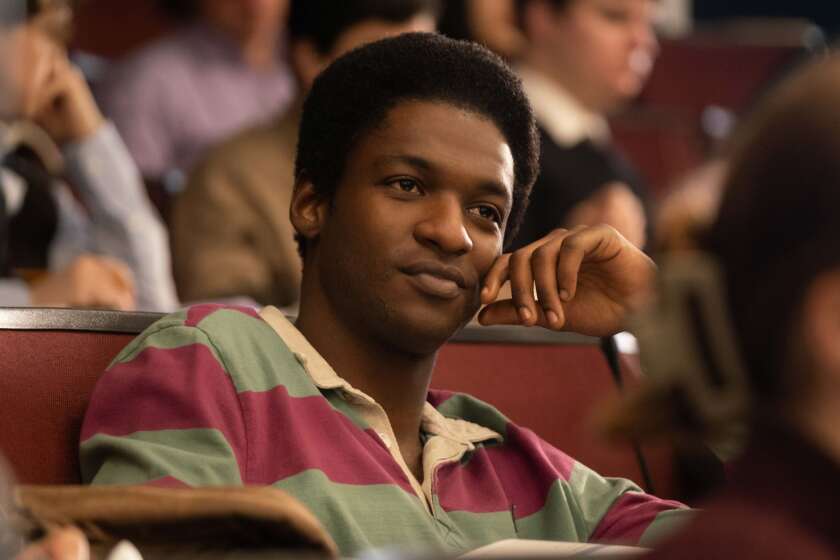They Had Faces Then--and Some Had Power
Four women who came to California to become the most powerful actresses of early Hollywood are being saluted by the Los Angeles County Museum of Art Film Department over the next two weekends. As part of the continuing “Made in California” exhibit, the careers of Mary Pickford, Norma Shearer, Marion Davies and Gloria Swanson are being recognized with two films each beginning tonight and continuing Saturday, next Friday and Jan. 20 in the Powerful Actresses of Early Hollywood Film Series.
The films being screened in the series--dramas, romances, comedies and a documentary--illuminate the breadth and depth of the talent of these four remarkable women.
Pickford, Shearer, Davies and Swanson were all such huge stars that their names were consistently the only ones above the title of their films. The characters they played were the protagonists for the action, and the actresses rarely Cari Beauchamp is the co-producer and writer of the documentary “Without Lying Down: Frances Marion and the Power of Women in Hollywood” and helped curate the Powerful Actress series for LACMA.
had the same directors or co-stars. They were on the screen influencing attitudes, fashions and mores for a minimum of 20 years each, an exceptional record during a time of remarkable changes in the country and in movie making.
They all easily bridged the transition from silents to sound; even Davies, who stuttered all her life, managed to train herself to speak clearly when the cameras were running. Swanson had her own production company, and Pickford co-owned a studio, United Artists, and was active as a producer and studio head long after she left the screen.
Shearer was already a rising star when she married MGM head of production Irving Thalberg in the late ‘20s, and though he took an active interest in choosing his wife’s roles, she remained an important star after his death in 1936. Davies also had a “protector” in William Randolph Hearst, but MGM recognized her talent and her drawing power by paying her $10,000 a week.
They were the aristocracy of Hollywood and formidable presences in the community. Davies was famous as the hostess of fabulous parties at her massive beach house in Santa Monica, her estate in Beverly Hills and, of course, San Simeon, but she was also a quiet and consistent supporter of children’s charities and was the initial contributor to the Children’s Hospital at UCLA. Pickford often opened her home for philanthropic fund-raising and was a co-founder of the Motion Picture Country Home.
A newly restored print of “Heart o’ the Hills” (1919) opens the series tonight with Mary Pickford as a spunky mountain girl who stands up against corporate outsiders, all the while keeping her eye on a very young John Gilbert. Music was integral to viewing “silent” films, and tonight’s screening will be accompanied by a chamber ensemble playing an original score by Maria Newman.
“Heart o’ the Hills” is double-billed with “Secrets” (1932), one of Pickford’s few “talking” films and her last as an actress. Co-starring Leslie Howard, “Secrets” is a dramatic epic spanning three generations, with Pickford (40 years old at the time) playing a role that takes her from being a teenager to a grandmother.
Two very different sides of Shearer are to be seen Saturday as she stars in both the comic social farce “Let Us Be Gay” (1930) and the historical drama “The Barretts of Wimpole Street” (1934), for which she was nominated for an Academy Award. “Let Us Be Gay,” rarely seen on the big screen, is riddled with double entendres designed to elude the censors. It co-stars Marie Dressler and Hedda Hopper.
Davies is the subject of a world premiere documentary, “Captured on Film: The True Story of Marion Davies,” shown next Friday. Executive produced by Hugh M. Hefner and Turner Classic Movies (and scheduled to air on TCM on Feb. 14), “Captured on Film” traces Davies’ rise from the chorus to become to one of the most popular comediennes in Hollywood, on screen and off. “The Cardboard Lover” (1928), also that night, is one of her last silent films and a showcase for her talent for comedy and impersonations. It will be accompanied by Robert Israel on the organ.
Swanson closes the series in a unique double bill Jan. 20: the classic “Sunset Boulevard” (1950) and the film her character Norma Desmond screens to prove “we had faces then,” “Queen Kelly” (1928). Directed by Erich von Stroheim (who plays her devoted butler in “Sunset Boulevard”), “Queen Kelly” was never actually completed. Swanson and the producer, Joseph Kennedy, pulled the plug when Von Stroheim focused more and more on the sadism of co-star Seena Owens’ character and went over the entire film’s budget shooting the first act.
Milestone Films restored the film in 1985 and, using the original script and score along with still prints and outtakes, a truncated second act was added. The result is a unique look at both Von Stroheim’s demented genius and Swanson at the height of her beauty and stardom.
* All double features start at 7:30 and are shown in the Bing Theater at LACMA. For more information, call (323) 857-6000.
More to Read
Only good movies
Get the Indie Focus newsletter, Mark Olsen's weekly guide to the world of cinema.
You may occasionally receive promotional content from the Los Angeles Times.










